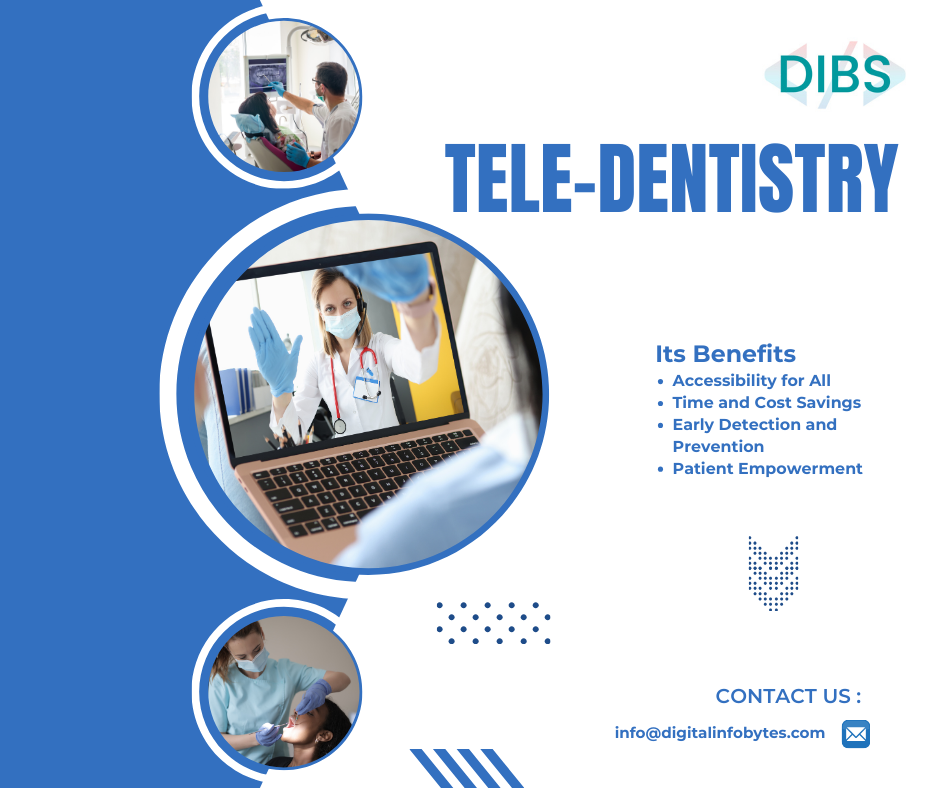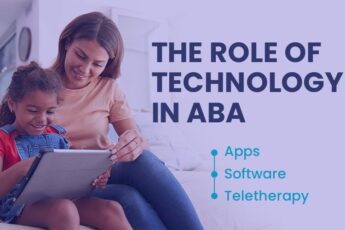Healthcare, being an industry that can never take a break, revolutionizes itself to fulfill the needs of the hour. During the recent pandemic visiting hospitals was unsafe, and people faced a dilemma in seeking medical care. That’s when technology came to the rescue. Dentistry, which requires physical visits, is now being practiced online through technologies such as telecommunications and remote diagnostic systems. The convergence of telecommunications and dentistry gave rise to tele-dentistry. Tele-dentistry is a newer approach to receiving oral care from the comfort of our home. In this blog, we’ll explore the concept of tele-dentistry, its benefits, challenges, and how it’s changing the future of dental healthcare.
Understanding Tele-Dentistry
Tele-dentistry is an emerging field of dentistry that uses technology to facilitate virtual consultations between patients and dental professionals. Through video calls, emails, or even phone calls, patients can connect with their dentists at the time of emergencies. Telemedicine acts as the first course of treatment without the need for a physical visit to the clinic. This approach not only enhances accessibility but also opens doors to preventive care and early intervention. Using the telemedicine approach in dental care has revolutionized dentistry to a whole new level.
The Benefits of Tele-Dentistry
Accessibility for All
Tele-dentistry bridges geographical gaps, making dental care accessible to individuals in remote or underserved areas. Whether you live in a bustling city or a rural community, you can connect with a dentist from the comfort of your home.
Time and Cost Savings
Traditional dental appointments often involve travel time and associated costs. Tele-dentistry eliminates these barriers, allowing patients to schedule appointments without disrupting their daily routines. This not only saves time but also reduces transportation expenses.
Early Detection and Prevention
Regular check-ups are crucial for maintaining oral health. Tele-dentistry encourages frequent communication between patients and dentists, thus enabling early detection of potential issues and facilitating preventive measures. Timely intervention can prevent minor concerns from developing into major problems.
Patient Empowerment
Tele-dentistry empowers patients by providing them with information about oral health and hygiene. Dentists can offer personalized advice, demonstrations, and resources to help patients take better care of their teeth between appointments.

Challenges of Tele-dentistry and their Solutions
While tele-dentistry brings numerous advantages, it’s essential to acknowledge and address its challenges:
Limited Physical Examination
One of the primary concerns with tele-dentistry is the absence of a physical examination. Dentists may find it easier to conduct a thorough assessment of oral health with direct access to the patient. To mitigate this, patients should provide clear images or videos of their mouths, thus aiding dentists in making informed decisions.
Technology Barriers
Not everyone has access to high-speed internet or the necessary devices for virtual consultations. To tackle this, governmental bodies should make an effort to improve digital infrastructure and promote the availability of affordable devices, ensuring that tele-dentistry is inclusive and accessible to all.
Data Security
Protecting patient data is a top priority in healthcare. Tele-dentistry platforms must adhere to stringent security measures to safeguard sensitive information. Both dentists and patients should be informed about the security protocols in place to build trust in this evolving mode of healthcare delivery.
The Future of Dental Care
Tele-dentistry is gaining popularity due to its dynamic nature. A bright future lies ahead for tele-dentistry as it is becoming an integral part of the dental care sector. Tele-dentistry may bring about these few changes in the dental care sector:
Integrated Care Models
Tele-dentistry can be seamlessly integrated into comprehensive healthcare models, offering a holistic approach to patient well-being. Collaborative efforts between dental professionals and other healthcare providers can result in more cohesive and patient-centric care.
Tele-dentistry for Specialized Services
Beyond routine check-ups, tele-dentistry can be harnessed for specialized services. Consultations with orthodontists, oral surgeons, or periodontists can be conducted virtually, expanding access to expert opinions and enhancing the overall quality of care.
Remote Monitoring Devices
The development of remote monitoring devices for oral health could further enhance the capabilities of tele-dentistry. Patients could use at-home devices to capture real-time data on their oral health, providing dentists with valuable insights between appointments.
Embracing Change
As with any technological advancement, the successful integration of tele-dentistry requires adaptation from both dental professionals and patients. Here are some ways to embrace this change:
Education and Training
Dental professionals should stay updated on the latest tele-dentistry tools and techniques through continuous education and training programs. This ensures they are well-equipped to provide high-quality virtual care.
Patient Education
Patients play a crucial role in the success of tele-dentistry. Educating them about the benefits, limitations, and proper use of virtual consultations fosters a sense of empowerment and encourages active participation in their oral health journey.
Policy and Regulation
Policymakers and regulators should establish clear guidelines for tele-dentistry. Management should ensure that the practice of tele-dentistry is ethical and secure. Creating a regulatory framework is essential to build trust among both healthcare providers and patients.
Conclusion
Tele-dentistry can be a promising tool to revolutionize dental care. It can help us create a future where dental care is accessible to all. This can be achieved by overcoming challenges and embracing the potential of tele-dentistry. The ultimate goal for any healthcare sector is to provide quality care that is convenient, inclusive, and designed to benefit individuals. With the advances in technology, it becomes the responsibility of healthcare providers to leverage them and transform healthcare delivery. Thus, teledentistry is the future of oral healthcare that when embraced to its full potential can help in fulfilling the ultimate goal,
Talk to our experts to know more about tele-dentistry and the recent advances that have come about in the field. Learn how the DIBS team can help you set up your tele-dentistry setup, customized as per the needs of your healthcare center.







Leave a Comment